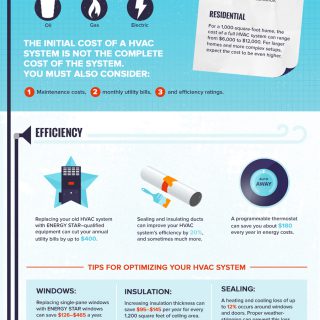The Ultimate Guide To Understanding Warm Pumps - How Do They Function?
The Ultimate Guide To Understanding Warm Pumps - How Do They Function?
Blog Article
Material By-Whitfield Singer
The most effective heat pumps can save you significant quantities of cash on energy expenses. They can also help reduce greenhouse gas emissions, particularly if you make use of power in place of fossil fuels like gas and heating oil or electric-resistance furnaces.
Heat pumps function very much the same as air conditioning system do. This makes them a sensible choice to standard electric home furnace.
Exactly how They Function
Heatpump cool homes in the summer and, with a little assistance from electricity or gas, they give a few of your home's heating in the wintertime. They're an excellent choice for individuals that want to minimize their use of nonrenewable fuel sources but aren't all set to change their existing heating system and a/c system.
They depend on the physical reality that also in air that appears also cold, there's still energy existing: cozy air is constantly moving, and it wants to relocate right into cooler, lower-pressure settings like your home.
Most ENERGY celebrity accredited heat pumps run at near their heating or cooling capability throughout most of the year, decreasing on/off cycling and conserving power. For the best performance, focus on systems with a high SEER and HSPF rating.
The Compressor
The heart of the heatpump is the compressor, which is also known as an air compressor. This mechanical flowing gadget utilizes prospective energy from power development to boost the stress of a gas by lowering its volume. It is different from a pump in that it only works on gases and can not deal with fluids, as pumps do.
Climatic air gets in the compressor with an inlet valve. It travels around vane-mounted arms with self-adjusting size that divide the interior of the compressor, developing several dental caries of varying dimension. The rotor's spin forces these dental caries to move in and out of stage with each other, pressing the air.
The compressor draws in the low-temperature, high-pressure cooling agent vapor from the evaporator and compresses it into the hot, pressurized state of a gas. https://kevsbest.com/best-hvac-services-in-portland-or/ is repeated as required to supply home heating or cooling as called for. The compressor likewise includes a desuperheater coil that reuses the waste heat and includes superheat to the refrigerant, altering it from its fluid to vapor state.
The Evaporator
The evaporator in heat pumps does the same thing as it does in refrigerators and ac system, transforming fluid cooling agent right into an aeriform vapor that gets rid of warmth from the room. Heatpump systems would certainly not function without this essential piece of equipment.
This part of the system lies inside your home or building in an indoor air trainer, which can be either a ducted or ductless system. It contains an evaporator coil and the compressor that presses the low-pressure vapor from the evaporator to high pressure gas.
Heatpump soak up ambient warmth from the air, and then use electrical energy to move that heat to a home or organization in home heating mode. That makes them a lot much more energy efficient than electrical heaters or heating systems, and because they're using tidy electricity from the grid (and not burning gas), they also generate far less exhausts. That's why heat pumps are such wonderful environmental selections. (As well as a big reason they're becoming so preferred.).
The Thermostat.
Heatpump are fantastic alternatives for homes in cool climates, and you can use them in mix with standard duct-based systems or even go ductless. They're a terrific alternative to fossil fuel heating unit or standard electric heaters, and they're extra lasting than oil, gas or nuclear heating and cooling equipment.
Your thermostat is the most vital element of your heatpump system, and it functions extremely differently than a standard thermostat. All mechanical thermostats (all non-electronic ones) work by using compounds that change dimension with boosting temperature, like coiled bimetallic strips or the broadening wax in a cars and truck radiator shutoff.
https://docs.google.com/spreadsheets/d/1Ju3PPHhZ0YBRlm03_3kPQhRnGvFfOb-QOHaqUZFcLCw/edit?gid=513303651#gid=513303651 contain two different types of metal, and they're bolted with each other to form a bridge that completes an electric circuit attached to your HVAC system. As the strip gets warmer, one side of the bridge expands faster than the other, which causes it to bend and signify that the heating unit is required. When the heat pump is in heating mode, the reversing shutoff turns around the circulation of refrigerant, to ensure that the outside coil currently operates as an evaporator and the interior cyndrical tube ends up being a condenser.